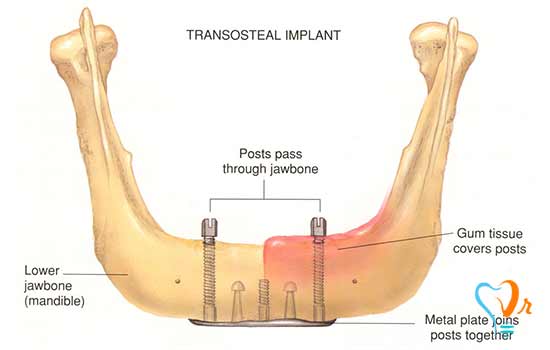What are the types of dental implant?


What are the types of dental implant?
Dental implants are made of Titanium alloy. They can be inserted in lower or upper jaws instead of natural tooth. They are fixed by a dental prosthesis. Titanium makes the prosthesis very resistance against oxygen, acid and corrosion.

Titanium doesn’t cause allergy in your body so it will not be considered as a foreign object by the body. Dental implant stabilizes remained jaw bone and reduces the depletion procedure. In this case, bone quality will be preserved. Dental implant includes two main parts: fixture and abatement.
At first, fixture is inserted within the jaw bone. Then inserting veneer on it will be performed. After inserting the fixture within the jaw bone; prosthesis is located on it. This prosthesis can be fixed or removable.
Patients with healthy gum and enough bone are good candidates for dental implant treatment. It is necessary to observe all oral health points – such as a natural tooth - for preserving and maintenance of dental implants. It is recommended to avoid extra pressures on implant. The patients are required to observe all oral health points and have regular examinations by the dentist.
Dental implants are categorized based on their location, shape and using methods. Dental implants types are as follows:
- Subperiosteal implants
In subperiosteal implants, a metal scaffold is inserted on the jaw bone and the gum covers it. Subperiosteal implants are used for 1-stage implant procedures. This type of dental implant is inserted within gum texture on the jaw bone. Some parts of the implant, namely posts, are out of the gum. So, the crown part will be located on them. One of the advantages of subperiosteal implants is that they are suitable for fixing the dentures in patients with low bone height.
- Endosteal Implants
In endosteal implant, dental implant is inserted within the jaw bone to create a very strong connection. This is a 2-stage procedure. This type of implant is inserted within the jaw bone directly by surgery. Endosteal implants are divided into several types: threaded, bladed and screwed. They are used instead of dentures.
- 1-stage implant
In this type of implant, a piece with appropriate length is inserted within the jaw bone. A part of the head of this piece comes out of the gum. After complete healing procedure, the crown and abatement are inserted on it and there is no need for second surgery.
In 1-stage implant, we can use a 2-piece implant. In this case, the abatement and the implant are connected in the first surgery. It is very important to observe many factors while healing after this procedure because in this condition, dental implant is very vulnerable against the forces that are applied on it.
- 2-stage implant
The most common method for dental implant is 2-stage implant. During the surgery, implant should be fixed within the jaw bone under the gum. For dealing with bone and adjacent teeth pressures and preventing any probable problems; the gum is sutured. In the second stage, it is necessary to wait until healing. Then, the surface of the dental implant should be opened for connecting abatement.

People who viewed this page also visited:
What are the dental implant treatment stages?
Implant Professional Center in Tehran
The best implant expert in Tehran
The best implant center in Tehran
What is immediate loading of dental implants?
Implant problems and implications
Force direction and its relationship with the implant body design
Unsuitable cases for dental implant
The geometry of the implant and its relationship with occlusal forces
The relationship of the implant body and functional surface














